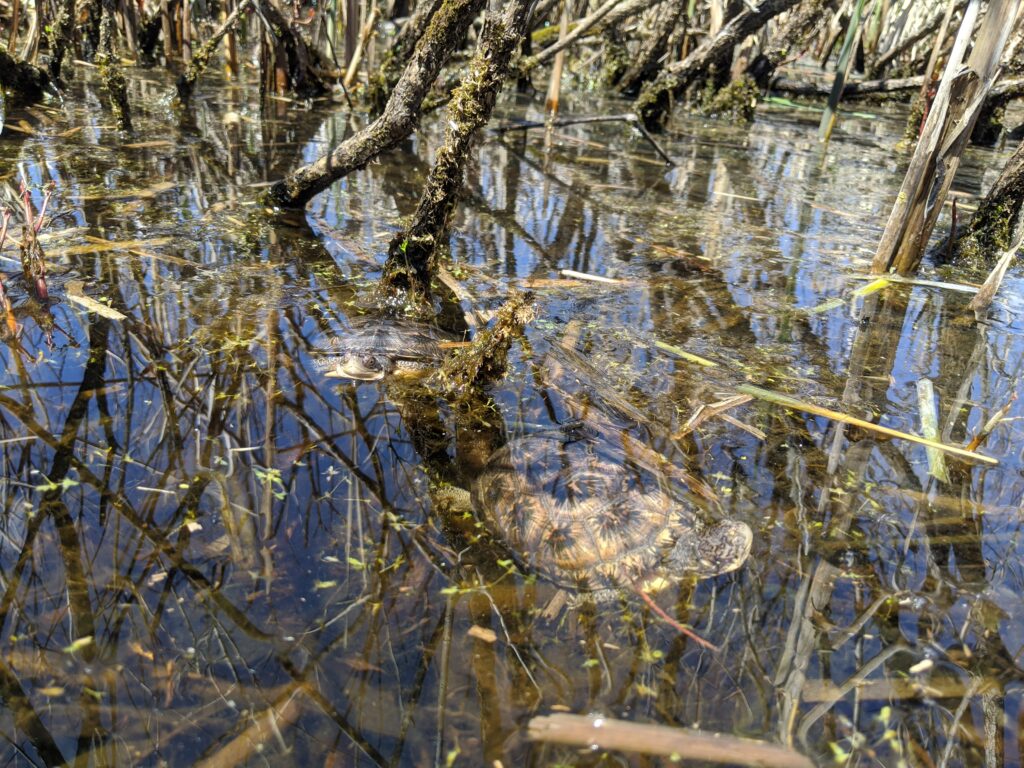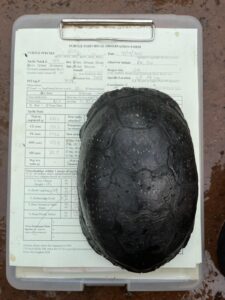All of our headstarting efforts with native turtles share the ultimate goal of restoring populations in need. Our oldest such project with the Blanding’s turtles at Great Meadows National Wildlife Refuge has always served as a model for others, and we’re excited to finally be seeing the fruits of almost two decades of continuous work. Releasing new juveniles is always a rewarding experience, but nothing is more exciting than recapturing a young turtle released years ago and seeing how much they’ve grown!
If you live in Massachusetts, you’ve surely noticed that this has been a very rainy summer. Those rains mean high water levels throughout the refuge at Great Meadows, which has allowed our team to survey and trap for turtles in areas that are often too dry to set a trap in during late July and August (the trap entrance needs to be fully submerged in water for the traps to work). ZNE’s Blanding’s Turtle Field Technician Ryan Kridler has reported record-breaking trap captures during late July and early August this year. With 20 traps set, a successful day of trapping at Great Meadows in a typical year would be two or three Blanding’s turtles a day. This year, the average has been six turtles a day, with the busiest day including 15 individual turtles!

Not only are we seeing a lot of turtles, but many of these turtles were especially exciting finds. New wild juvenile females are a rarity at Great Meadows, but our team caught two such turtles, marked them, and attached radios to allow us to document their movements. We have lots of data on the movements of our adult turtles and our just-released headstarts, but the crucial ten-plus years between being the hatchling and the adult stage is still something of a mystery to us ecologically. Learning more about where these turtles spend their time and how they make their living will be the “missing link” in ensuring that Blanding’s turtles have everything they need to complete their full life cycle at Great Meadows.

Perhaps even more exciting was the capture of marked female #405 (right). Female 405 was an early headstart, raised in 2008 at Franklin Park Zoo and then released without a radio in the summer of 2009 weighing just over 140 grams. She resurfaced in captures by our biologists in 2014 and 2020, but this year in 2023, we discovered that she weighs 1195 grams, nearly nine times her release weight. This also puts this 15-year-old turtle in the same weight class as some of our known adult egg-laying turtles. If female 405 is indeed large enough to lay a clutch of her own next year, it could be the very first confirmed clutch laid by a headstarted individual at Great Meadows – a truly amazing success story for local conservation.
